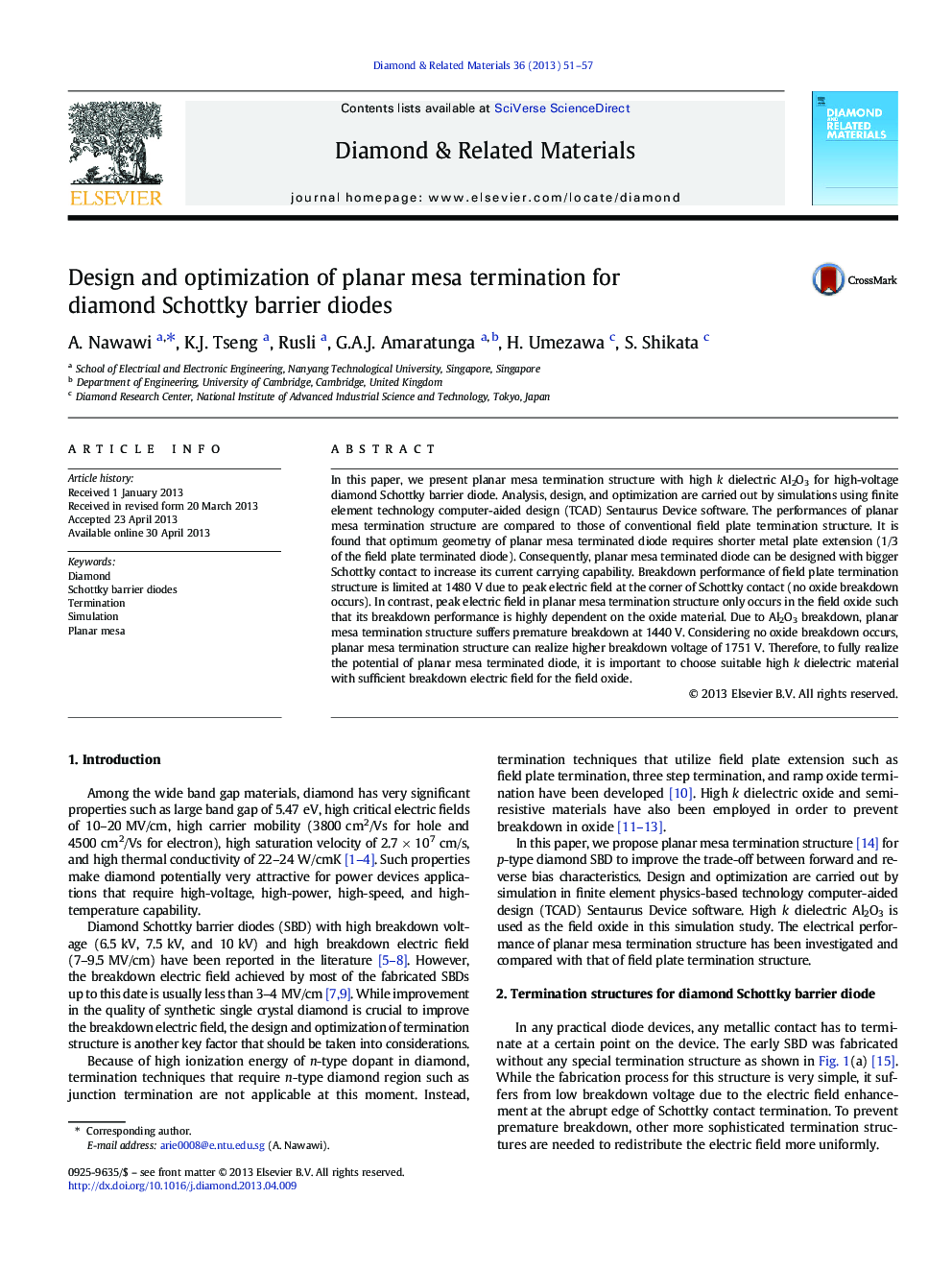| Article ID | Journal | Published Year | Pages | File Type |
|---|---|---|---|---|
| 701750 | Diamond and Related Materials | 2013 | 7 Pages |
•Planar mesa termination for high-voltage diamond Schottky barrier diode was proposed and investigated.•High k dielectric Al2O3 is used as the field oxide.•Analysis and design optimization were conducted by simulation in finite element physics based software.•Planar mesa structure can reach higher breakdown voltage with less area consumption compared to field plate structure.•Alternative high k materials for field oxide are needed to realize the potential of planar mesa termination.
In this paper, we present planar mesa termination structure with high k dielectric Al2O3 for high-voltage diamond Schottky barrier diode. Analysis, design, and optimization are carried out by simulations using finite element technology computer-aided design (TCAD) Sentaurus Device software. The performances of planar mesa termination structure are compared to those of conventional field plate termination structure. It is found that optimum geometry of planar mesa terminated diode requires shorter metal plate extension (1/3 of the field plate terminated diode). Consequently, planar mesa terminated diode can be designed with bigger Schottky contact to increase its current carrying capability. Breakdown performance of field plate termination structure is limited at 1480 V due to peak electric field at the corner of Schottky contact (no oxide breakdown occurs). In contrast, peak electric field in planar mesa termination structure only occurs in the field oxide such that its breakdown performance is highly dependent on the oxide material. Due to Al2O3 breakdown, planar mesa termination structure suffers premature breakdown at 1440 V. Considering no oxide breakdown occurs, planar mesa termination structure can realize higher breakdown voltage of 1751 V. Therefore, to fully realize the potential of planar mesa terminated diode, it is important to choose suitable high k dielectric material with sufficient breakdown electric field for the field oxide.
